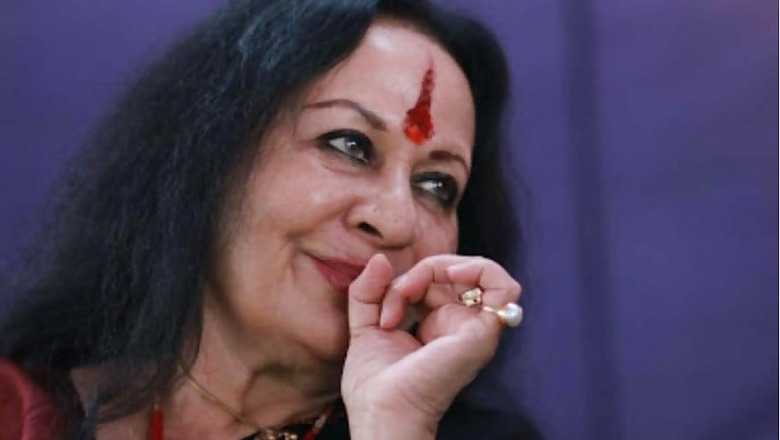
views
New Delhi: What happened to classical dancer Sonal Mansingh in Delhi’s Mavlankar Hall has been well recorded in the interviews and her biography. In 1993, she accepted the Vishwa Hindu Parishad's invitation to perform in Washington to mark the 100th anniversary of Swami Vivekanand’s Chicago address.
She accepted the invite but was later ‘summoned’ in the hall by “Artists Against Communalism,” which included Kuldip Nayar, Shabana Azmi and members of Sahmat. The members questioned her over this decision, but Mansingh stood her ground. For this act of hers, she was called ‘Sanghi’.
More than two decades later, she again had a public brush with saffron – she participated in Rashtriya Swayamsevak Sangh’s rally at Jantar Mantar, which was organised against the attacks on the Sangh workers in Kerala.
Sonal Mansingh was one among the four persons nominated by the President to the Rajya Sabha on Saturday. She spoke to News 18 about the saffron label, nationalism and her commitment to art and culture.
Mansingh founded the Centre for Indian Classical Dances, Delhi, in 1977. Mansingh, who specialises in the Bharatanatyam, Odissi and Chhau dancing styles, has been performing for nearly six decades. She was awarded the Padma Vibhushan in 2004. She was also selected by Prime Minister Narendra Modi as Navaratna for her work on Swachh Bharat.
In 2003, she had very controversial stint at the Sangeet Natak Akademi as its chairperson. She is presently a trustee of Indira Gandhi National Centre for Arts and member of the Central Advisory Board on Culture.
Excerpts from the edited interview:
Q: After being nominated as the member of Rajya Sabha, how are you planning to take your commitment to art and culture forward?
Sonal Mansingh: There is my whole lifetime’s work and my understanding of India as a great country of culture and tradition. There are so many different cultures of India spread across - and what we can see is, its connection with society and with its changing times. How can it support, help and guide a society in keeping balance between superficial things and between one’s identity intact? There are so many issues – women, environment to work through art. How Indian art has looked upon these things and if that way is still applicable or not.
Q: You have been labelled as a saffron artist. How do you take this tag?
Sonal Mansingh: I always feel sad about the colours. The whole colour palate of nature is so beautiful, every imaginable colour is there. Sun is saffron, and you can’t do anything about it. Rivers, ocean are blue. To identify colours with something and say this is good, this is bad rather than enjoy the colours makes me very sad.
I would like to add that the whole debate of saffron thing suddenly came up. It was not there when I was growing up, and not there when I was starting my career. Never heard of it. Never heard saffron is bad. Actually Kesar is very good for health.
Anyway, I feel there is so much misinformation, misinterpretation, a deliberate attempt to remove the core and value of Indian tradition. In our country, we have green, we have saffron, we have yellow, we have white, blue, grey, it is a rainbow of traditions in India. I feel whatever happened was unfortunate.
Q: You come from the family of freedom fighters, your grandfather was one of the first five governors of India. How do you see the nationalism debate raging in the country?
Sonal Mansingh: It is indeed surprising that even after 70 decades of India becoming independent such a debate is taking up space and time on social media, print media, electronic media and in the Parliament. Nationalism becoming an issue of debate defies imagination.




















Comments
0 comment